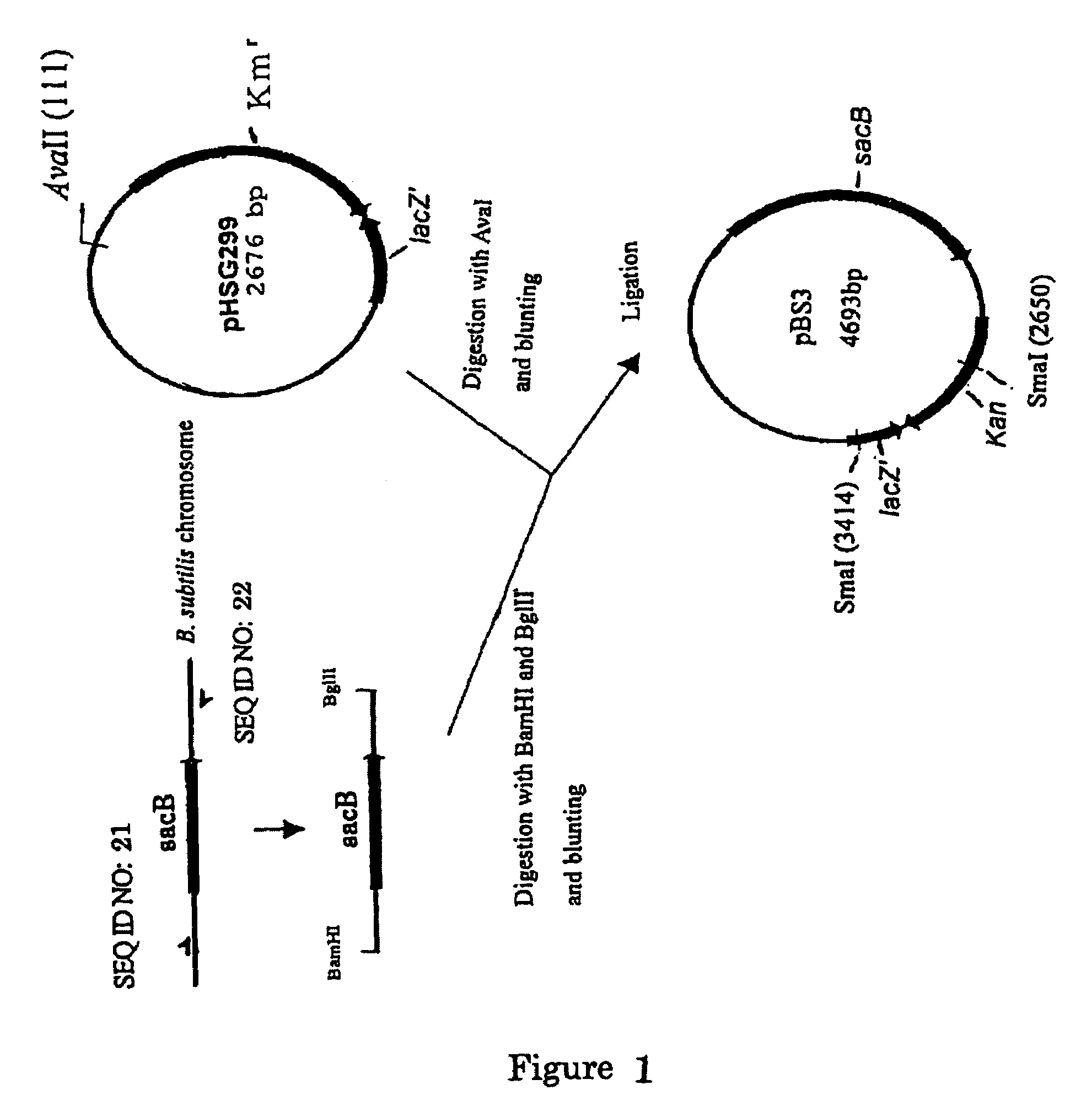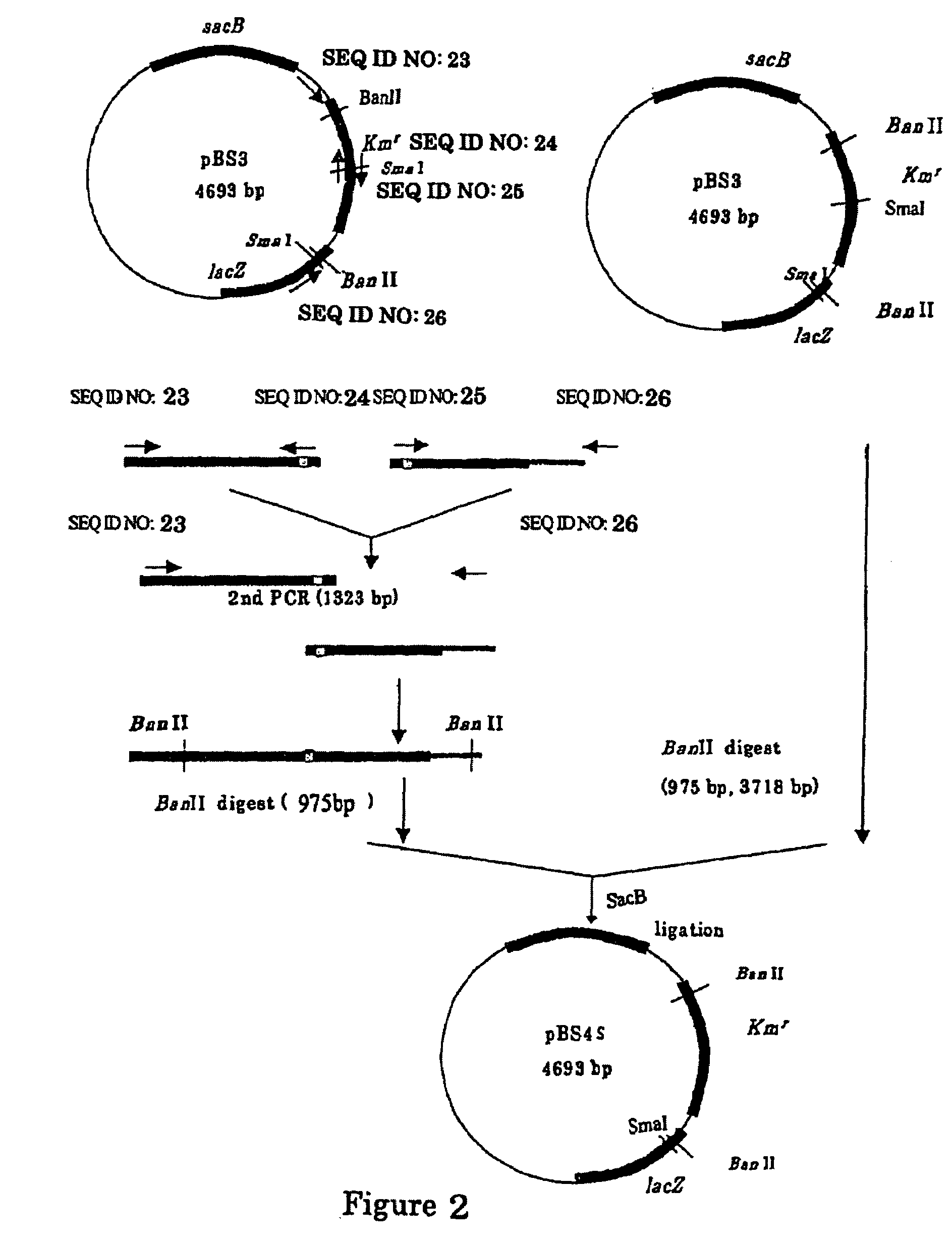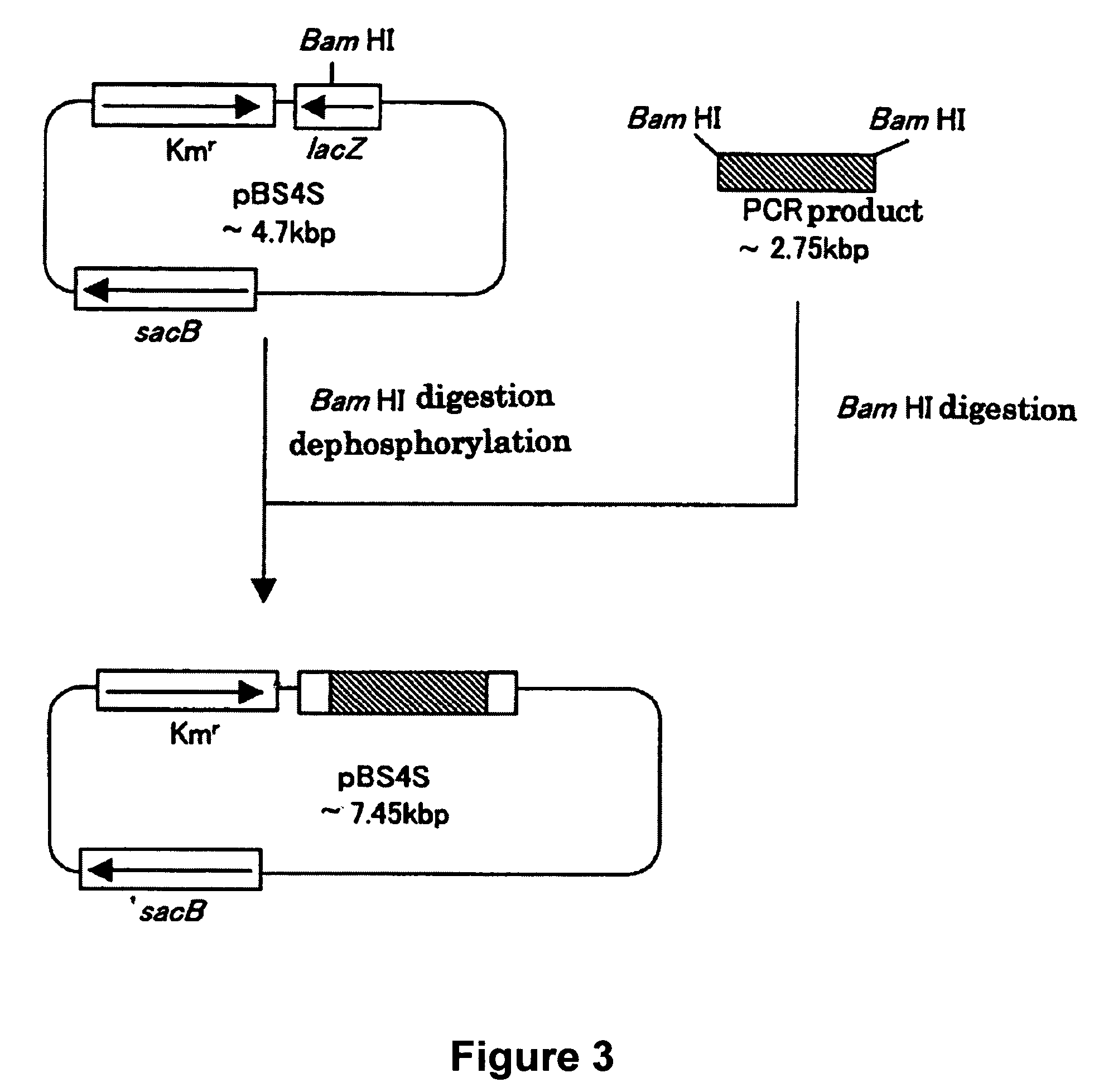L-glutamic acid-producing microorganism and a method for producing L-glutamic acid
a technology of l-glutamic acid and microorganisms, which is applied in the direction of enzymology, organic chemistry, transferases, etc., can solve the problems of reducing the energy generated through the tca cycle, reducing the yield of l-glutamic acid, and reducing the ability to degrade l-glutamic acid, so as to reduce the activity of -ketoglutarate dehydrogenase and reduce the ability to d
- Summary
- Abstract
- Description
- Claims
- Application Information
AI Technical Summary
Benefits of technology
Problems solved by technology
Method used
Image
Examples
example 1
[0171] Construction of a Vector Carrying the sacB Gene
[0172](A) Construction of pBS3
[0173]A sacB gene (SEQ ID NO: 19) was obtained by PCR using a chromosomal DNA of Bacillus subtilis as a template and the oligonucleotides of SEQ ID NOS: 21 and 22 as primers. The PCR was performed using LAtaq (available from TaKaRa) according to the program of one cycle of pre-denaturation at 94° C. for 5 minutes; and 25 cycles of denaturation at 94° C. for 30 seconds, annealing at 49° C. for 30 seconds, and elongation at 72° C. for 2 minutes. The obtained PCR product was purified by a conventional method, and then digested with BglII and BamHI and blunt-ended. The fragment was inserted into pHSG299 which had been digested with AvaII and blunt-ended. The resulting DNA was used to transform competent cells of Escherichia coli JM109 (available from Takara Bio). Then, the transformed bacterial cells were applied onto an LB agar plate containing 25 μg / ml of kanamycin (hereinafter, abbreviated as “Km”), a...
example 2
[0192]Comparison of the ability of strains ATCC13869 OAGN, OA2-2, and OAGN2-2 to degrade glutamic acid
[0193]While strains carrying a wild-type odhA gene can assimilate L-glutamic acid in a medium, the strains in which the activity of α-KGDH is weakened or eliminated due to the odhA mutation is presumed to also have a decreased ability to degrade glutamic acid. Then, the ability to degrade glutamic acid was determined using each of the odhA mutant strains ATCC13869 OAGN, OA2-2, and OAGN2-2 prepared in Example 1 to . Each strain was cultured on a CM-Dex plate for one day at 25° C. and then inoculated into a liquid medium composed of 20 g / l sodium glutamate, 2.64 g / l (NH4)2SO4, 0.5 g / l KH2PO4, 0.5 g / l K2HPO4, 0.25 g / l MgSO4.7H2O, 0.01 g / l FeSO4.7H2O, 0.01 g / l MnSO4.4–5H2O, 0.01 g / l CaCl2, 0.02 mg / l CuSO4, 40 g / l MOPS, 0.03 g / l protocatechinic acid, 200 μg / l vitamin B1, and 300 μg / l biotin (adjusted to pH 6.7 with NaOH), followed by culturing at 25° C. and 34° C. for 50 hours. The amoun...
example 3
[0195]Comparison of the α-KGDH activity of ATCC13869 OAGN, OA2-2, and OAGN2-2 strains
[0196]The α-KGDH activity of the strains ATCC13869 OAGN, OA2-2, and OAGN2-2 was measured using the culture broth collected after 4 hours from the start of the culture in Example 4 as described below. The activity was measured according to the method described in Agric. Biol. Chem., 44(8), p1897 (1980). Specifically, after bacterial cells were washed with 0.2% sodium chloride, they were suspended in a buffer solution of 100 mM TES-NaOH (pH 7.5) containing 30% glycerol. The bacterial cells were sonicated using Bioruptor (Olympus) and then centrifuged to remove non-ruptured bacterial cells, followed by gel filtration with the same buffer using Sephadex-G25 (Amersham Pharmacia). The thus obtained preparation was used as a crude enzyme solution. The crude enzyme solution was added to a reaction system containing 100 mM TES-NaOH (pH 7.7), 5 mM MgCl2, 0.2 mM CoA, 0.3 mM cocarboxylase, 1 mM α-ketoglutaric a...
PUM
| Property | Measurement | Unit |
|---|---|---|
| temperature | aaaaa | aaaaa |
| temperature | aaaaa | aaaaa |
| temperature | aaaaa | aaaaa |
Abstract
Description
Claims
Application Information
 Login to View More
Login to View More - R&D
- Intellectual Property
- Life Sciences
- Materials
- Tech Scout
- Unparalleled Data Quality
- Higher Quality Content
- 60% Fewer Hallucinations
Browse by: Latest US Patents, China's latest patents, Technical Efficacy Thesaurus, Application Domain, Technology Topic, Popular Technical Reports.
© 2025 PatSnap. All rights reserved.Legal|Privacy policy|Modern Slavery Act Transparency Statement|Sitemap|About US| Contact US: help@patsnap.com



